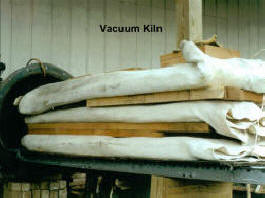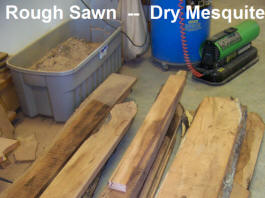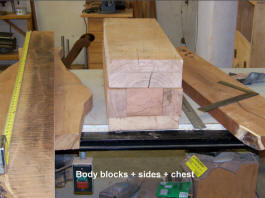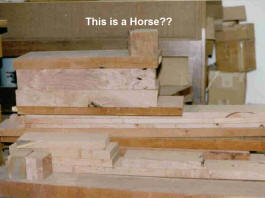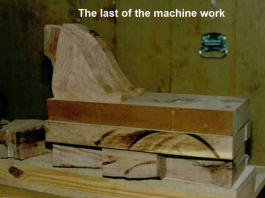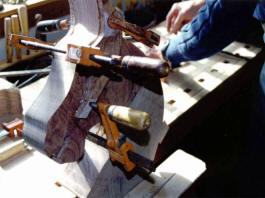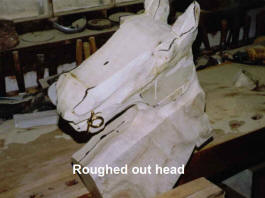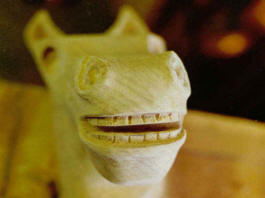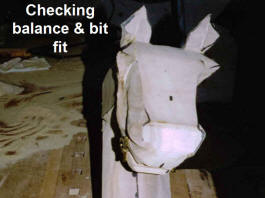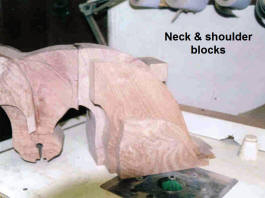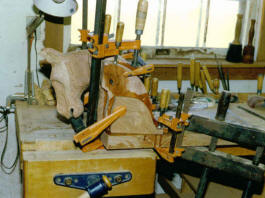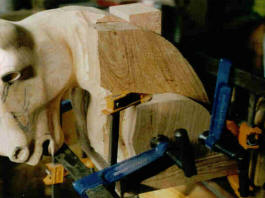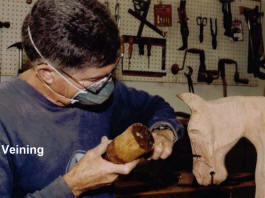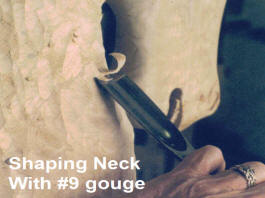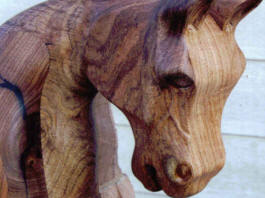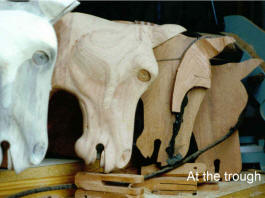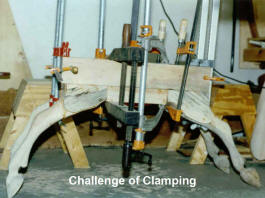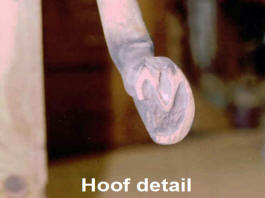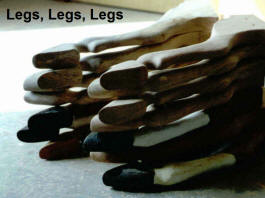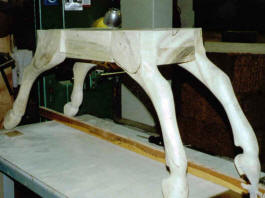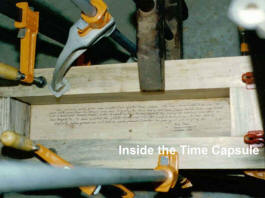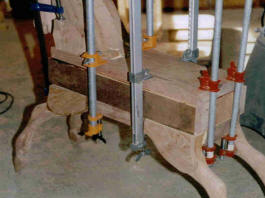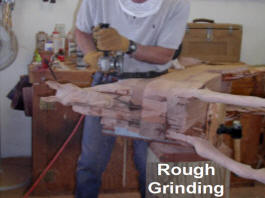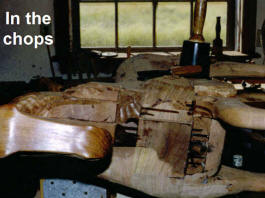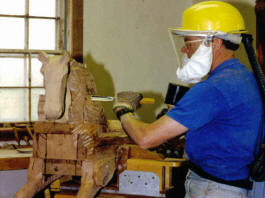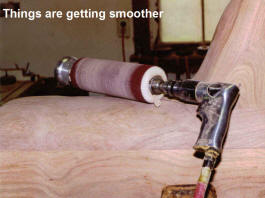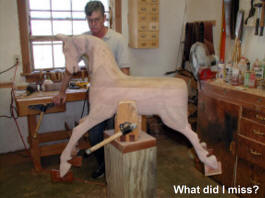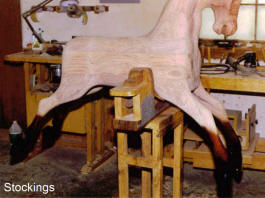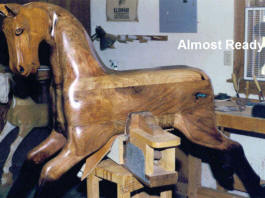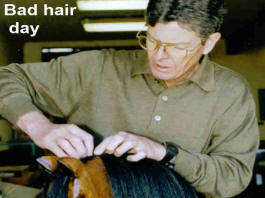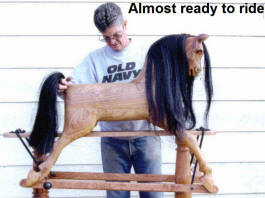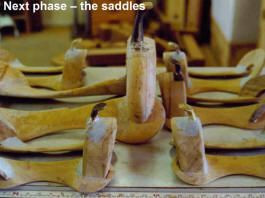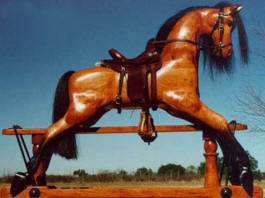Rocking Horse Construction
Each horse is constructed from 25 pieces of wood. Initially, it resembles a very angular, boxy rendition of the Trojan horse. The challenge is to remove any wood which is not horse. The wood is selected for its grain and location on the body. Areas that are highly visible are highlighted with burl or tightly figured grain.
No two horses are the same. Each has its own personality, which evolves during the construction phase. Alan Carr takes every horse from the kiln to delivery. The actual construction phase takes approximately three months once the wood is dry.
Mesquite is the wood of choice for Alan Carr. The wood is unique to the Southwest. Just like the people who carved out a frontier in Texas, a mesquite log can tell stories about the blue northers, decades of drought, lightning strikes and insect infestation. Mesquite's many attributes, like dimensional stability, outweigh its craggy composure. Like the people of the Southwest, the wood is tenacious, resilient, full of obvious character and ruggedly handsome. Its density, 2 1/2 times harder than oak, requires heavy-duty sculpting tools. Carr uses a 1 1/4 inch #9 gouge and a 22 ounce mallet, similar tools to what a stonemason would use, to rough sculpt. Rasping and sanding are the next steps. Both rasping and sanding are done by hand because of the complexity of the face, jaws and muscles.
Other wood options are: quilted maple, marbled walnut and mahogany. Each horse is finished with nine coats of tung oil. The horses are fitted with real horse hair manes and tails. Hair color selection is the choice of the owner.
Unique to the Native Texan series are the hand-tooled Western saddles. The saddles are constructed on wooden raw hide covered trees. Saddles are hand-cut, hand-tooled and stitched of the finest steer hide available. The saddles are a collector's piece of Western art. Saddles are numbered to match the horse.
Click any image to enlarge.
